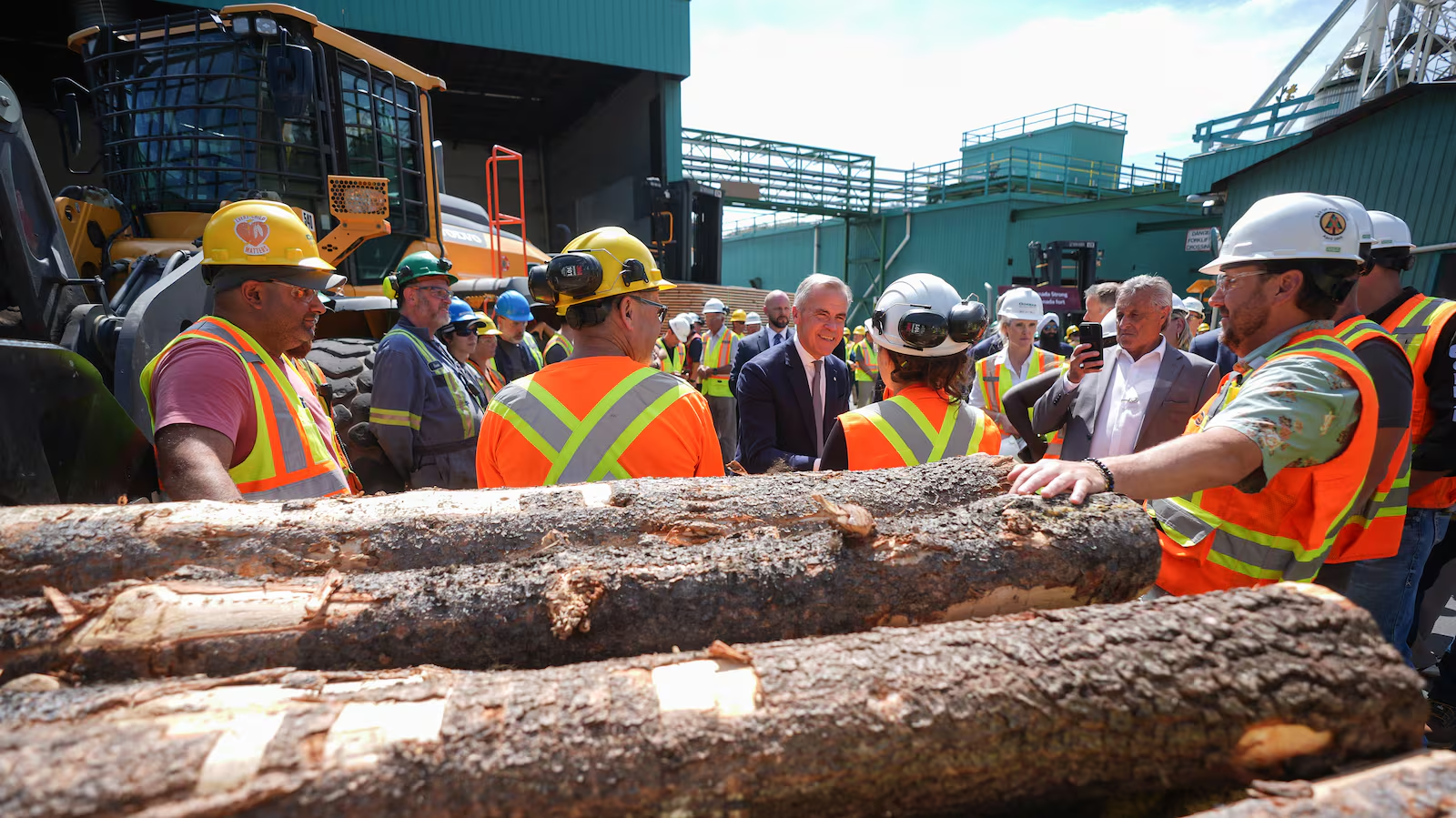The head of an association representing wood, pulp and paper producers wants the upcoming federal budget to help “future-proof” the forestry sector while tariffs and duties pile up, as some mills have already been forced to curtail production or close.
“Let’s not waste a crisis,” said Derek Nighbor, president and CEO at Forest Products Association of Canada.
“Let’s use this as a moment to future-proof and future-ready our industry, and to support our workers and ensure that some of these mills can operate, for decades to come.”
Canada’s long-standing softwood lumber dispute with the United States has worsened as U.S. tariffs and duties reached 45 per cent earlier this month and could potentially be hit by an additional 10 per cent tariff if U.S. President Donald Trump follows through on his recent announcement. Homebuilding and renovations in the U.S. have also slowed, creating a perfect storm.
Of the softwood lumber made in Canada last year, 66 per cent was exported and nearly 90 per cent of those exports went to the U.S., according to the federal government.
At a meeting last month, industry leaders urged Ottawa to make forestry a priority during trade negotiations with the Trump administration. This was before U.S. President Donald Trump stopped negotiations and announced an additional 10 per cent tariff on Canada after Ontario aired an anti-tariff ad, which included former U.S. president Ronald Reagan.
“As an industry in general, I would say we’re at a tipping point right now, and that’s why there’s the urgency,’ said Nick Arkel, CEO of Gorman Group, a lumber manufacturer in B.C. “We need to have an agreement, and it needs to be an agreement that we can live with.”
In private woodlots in New Brunswick, the trees on their properties cannot shelter them from all the uncertainty as tariffs and duties add up.
“I think everyone is feeling a lot of apprehension,” said Rick Doucett, president of the New Brunswick Federation of Woodlot Owners. “It’s like a maze, and it changes every day.”
Uncertainty makes planning to harvest timber difficult. Doucett notes contractors are reluctant quote a stumpage price, since they don’t know what they’re going to get at the mill, or if the mill is going to take wood. Now that tariffs have expanded to timber, as well as softwood, some U.S. mills aren’t buying.
“There’s a lot of mills that have bought wood traditionally from western New Brunswick in the form of roundwood that are no longer even accepting wood,” he said.
In early August, Prime Minister Mark Carney announced $1.25 billion in support for the softwood lumber industry and vowed to prioritize Canadian materials in construction, while also diversifying markets.
Nighbor said it’s his understanding that money is “starting to flow,” but notes that if the dispute drags on, more money will be needed.
“If this goes on for three, four or five months, $1.25 billion is not going to be nearly enough to support workers and businesses,” he said.
In a pre-budget address last week, Carney promised to move a “Buy Canadian Policy” forward that will prioritize Canadian lumber in projects, and mentioned a goal to double non-U.S. exports over the next decade.
When the budget is shared Nov. 4, Nighbor will be looking for more details on spending to help the forestry industry diversify its export markets. He also expects to learn more about spending on innovation to help retool mills and support a growing, mass timber, prefabricated modular homebuilding industry.
“There’s a lot of innovation that can happen there. I’m hopeful to see some real commitments to regulatory reform,” he said.
About 200,000 people work in Canada’s forestry industry, and Unifor represents about 24,000 of them.
Lana Payne, Unifor’s national president, said there’s been hundreds of jobs lost, adding some are short-term layoffs as mills undergo curtailments, while others are long term layoffs.
“We have companies who are basically just trying to … keep the wolves from the door right now,” said Payne.
In the upcoming budget, Payne wants to see Canada lead an industrial strategy that includes a “buy Canadian” procurement component.
“It would spur some growth and also maintain some of the jobs that we have,” she said.
Payne said she also wants to see a made-in-Canada housing strategy that relies on Canadian lumber, along with money for research and development to help the industry innovate, as well as funding for companies trying to keep the doors open.
“While we’re in this trade war, we have to keep workers working and keep this industry surviving,” Payne said.
